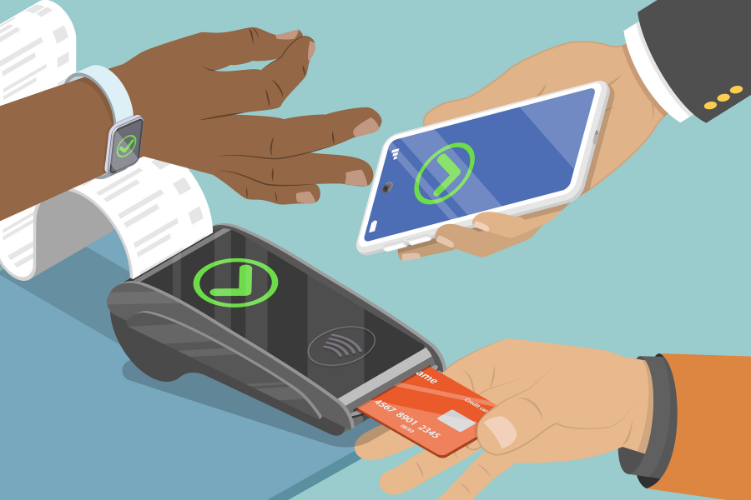Watch video summary
Schedule a Free Consultation Call Today
Discover how we can help you overcome, the latest payment challenges.
In 2025, the way businesses and consumers handle transactions is rapidly evolving. Cash and card may still be present, but they’re no longer dominant. Today’s customers expect flexibility, speed, and options tailored to how they live and work.
At Facilero, we’ve been tracking this shift closely—and it’s only accelerating. From mobile wallets to instant transfers, BNPL models, and biometric authentication, alternative payment methods (APMs) are redefining the flow of money. Businesses that don’t keep up with these demands risk falling behind in both growth and relevance.
What Do We Actually Mean by Alternative Payment Methods?
Alternative Payment Methods (APMs) are any transaction solutions that don’t rely on traditional credit, debit, or cash. These include mobile wallets, account-to-account transfers, buy-now-pay-later (BNPL) models, QR-based systems, wearable payments, and even voice-authorised transactions.
What links them all? Simplicity, speed, and user control. Whether it’s using a QR code, tapping a watch, or authorizing via fingerprint, these payment tools put decision-making directly in the hands of the user.
Why Consumers Are Embracing APMs?
Several forces are driving adoption. First, digital fluency—more people now use their mobile phones for everything, including payments. That transition from mobile banking to mobile payments is only natural.
Second, there’s a rising demand for fast, secure experiences. People want to move money instantly without worrying about delays or failed transactions. Biometric verification and real-time transfers make APMs not just more convenient, but more secure.
Finally, consumers want flexibility. Whether splitting a purchase with BNPL or avoiding credit card use altogether, APMs offer options that fit different financial situations without friction.
The Business Case for Accepting APMs
Businesses that offer a range of payment methods often see direct improvements in conversion rates—especially on mobile. With fewer checkout hurdles, customers are more likely to complete purchases.
APMs also help expand reach into underbanked regions or markets where card use is less common. That’s a big opportunity for global businesses looking to scale.
Additionally, some APMs offer lower processing fees and faster settlement times. For example, real-time bank transfers or QR payments can significantly reduce operational costs and boost net margins.
There’s also a strategic advantage in data. APMs often enable greater insights into customer behaviour, giving businesses the chance to create personalised experiences and improve engagement.
Mobile Wallets and Contactless Payments Continue to Surge
Mobile wallets are leading the shift. With near-instant tap-to-pay features, supported by secure biometric identification, consumers trust and prefer them more than ever. The adoption of contactless payments has moved from optional to expected in both retail and service environments.
Even wearable tech is joining in. Smartwatches and other devices are becoming part of the payment flow. Faster checkouts and reduced friction are becoming standard, especially in high-volume or fast-paced settings.
BNPL Isn’t Just a Trend—It’s a Behaviour Shift
Younger generations are moving away from traditional credit models. BNPL services offer transparency and control, helping them manage purchases without incurring interest or impacting their credit scores.
This isn’t just another option at checkout—it’s a behaviour-driven demand. Businesses that don’t offer it risk losing customers, particularly during major sales events or when offering high-value products and services.

The Role of Regulation and Security in APM Expansion
As new payment models enter the mainstream, regulatory oversight becomes more important. Governments are introducing policies to protect users, especially around credit-based systems like BNPL.
On the technical side, security remains front and centre. From tokenisation and encryption to AI-driven fraud detection and biometric authentication, these innovations ensure that convenience doesn’t compromise safety.
For businesses, staying compliant while adapting to APM trends is key to long-term success.
Infrastructure Still Matters
Even with the growth of APMs, businesses can’t afford to ignore infrastructure readiness. Some regions still face mobile connectivity issues or rely on older devices. Offering multiple payment types—while optimising for performance—is critical to serving every customer segment effectively.
Looking Ahead: What Comes Next for APMs?
We’re already seeing the next wave of innovation. Expect more seamless integrations with digital identity, voice-enabled payments, and AI-based financial automation.
The businesses that lead will be those who build flexibility into their payment infrastructure and invest in tools that support both customers and compliance.
How Can Facilero Help You?
Selecting the right payment provider isn’t just about enabling transactions—it’s about ensuring your infrastructure supports long-term growth. You need reliability, flexibility, and the ability to scale without creating friction for your users.
Whether you’re operating online, offline, or across multiple regions, your payment systems should be efficient, secure, and compliant. Facilero helps streamline that complexity so you can focus on serving your customers.
Built for Today, Ready for Tomorrow
Markets evolve fast—and payment expectations evolve even faster. Your systems should be able to keep up. From integrating APMs to managing security and compliance, it pays to work with a provider that understands the terrain.
Trust matters too. Facilero brings not just tools, but industry expertise and real-world solutions that align with your goals.
Join us now and let us help take your business to the next level!
Get A Free Consultation
Book a free call with us to discuss how we can help you expand in new regions, scale, and get the cash flowing in your business.





